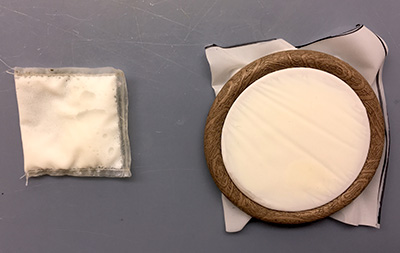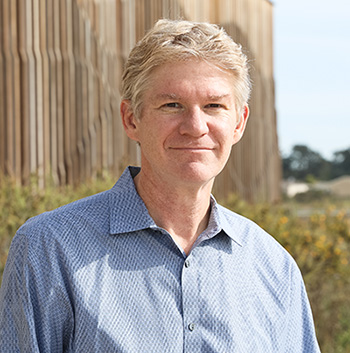Raphael Kudela, professor of ocean sciences at UC Santa Cruz, has been working for over 20 years to understand and predict the periodic blooms of toxic algae that occur along the California coast. One focus of his work in recent years has been to improve the monitoring technology available to detect when algal toxins are appearing in coastal waters.
Two new grants from the National Oceanic and Atmospheric Administration (NOAA) are funding ongoing efforts by Kudela and his collaborators to develop technology that can detect a broad range of algal toxins. Toxins that were not previously considered a problem on the West Coast are beginning to appear at dangerously high levels in California shellfish, Kudela said.
"We are increasingly recognizing that the West Coast is not immune to numerous harmful algal bloom issues besides the traditional ones that get most of the attention," he said.
Not all algae produce toxins or other harmful effects, but certain species have become notorious for their devastating effects on California's coastal fisheries and wildlife. Domoic acid, a potent neurotoxin produced by a type of algae called Pseudo-nitzschia, has caused major disruptions of the Dungeness crab fishery in recent years, in addition to poisoning seabirds, sea lions, and other wildlife.
Algal toxins like domoic acid enter the food chain when filter-feeding organisms such as shellfish and sardines, or bottom feeders like crabs, consume the algae and accumulate the toxin in their tissues. State monitoring programs and annual closures of commercial and recreational fisheries are designed to prevent human exposure to these toxins.
Toxin tracking
Historically, monitoring for toxins has relied on strings of mussels deployed at sites along the coast and regularly harvested, ground up, and analyzed to gauge toxin levels. Kudela and his team are now testing a new monitoring technology in four different California coastal environments. Known as Solid Phase Adsorption Toxin Tracking (SPATT), the new technology uses small resin beads held inside a tea bag-like apparatus. The beads act like tiny sponges, soaking up all kinds of toxins from the water.
The SPATT devices are hung in the water and collected at regular intervals for analysis. The resin beads are analyzed in a lab using a mass spectrometer to identify which toxins, if any, were present and at what levels.
While promising, the new SPATT technology provides data in a different form than the traditional mussel monitoring. "The management agencies are having difficulties comparing the toxin levels found in the resin to the toxin levels found in shellfish," Kudela said.
The new NOAA grants include a project led by Kudela to conduct a five-year comparative study of the two methods. His hope is to develop a coefficient of sorts, allowing the SPATT results to be converted into a scale similar to what management agencies currently use to track toxin levels.
Kudela also wants to use the SPATT technology to monitor for a wider range of toxins than the ones agencies have traditionally focused on. In a 2018 study, Kudela's lab found four different algal toxins in mussels collected from San Francisco Bay.
"That caught people's attention," he said, noting that there appear to be more toxins in California's coastal waters than are currently being detected by routine monitoring.
The second NOAA-funded project, led by Christopher Gobler of Stony Brook University, focuses on using SPATT technology to detect and monitor one of those emerging threats. Microcystins are toxins produced by freshwater algae (cyanobacteria) that can cause liver damage in people and animals. Research by Kudela and others has shown that these freshwater toxins are entering coastal waters and accumulating in shellfish.
Once the SPATT technology has been calibrated, Kudela said he expects management groups such as the Environmental Protection Agency and the California Department of Fish and Wildlife to begin developing new guidelines for microcystins.
"Right now, there are no guidelines about freshwater toxins in the marine environment," he said. SPATT can be used to quantify toxin levels in the water and provide data needed for the development of guidelines that can prevent human exposure to the toxins.
Harmful algal blooms have been associated with warmer ocean temperatures and high nutrient levels in the water. In 2015, when an oceanic heat wave dubbed the "warm blob" spanned the coast from California to Alaska, an unprecedented bloom of toxic algae caused losses of over $90 million in the shellfish and crab industries. With another oceanic heat wave beginning to form in the Pacific Northwest this year, the possibility of another catastrophic harmful algal bloom looms on the horizon.
Since that 2015 event, Kudela and other scientists have been working together and sharing information on ocean conditions and harmful algal blooms. Through this collaboration, they hope to better understand what the future holds for our coastal waters. For this year, strong winter storms could still mix up the warm surface waters and alleviate the threat of another super bloom, Kudela said.
"At this point in the season, we're all just waiting to see what happens," he said.




